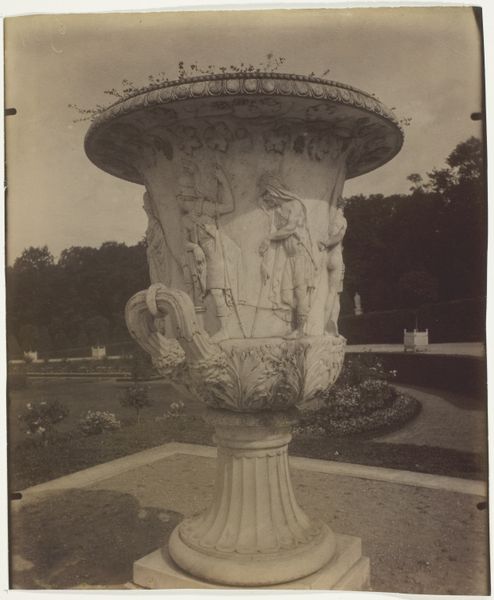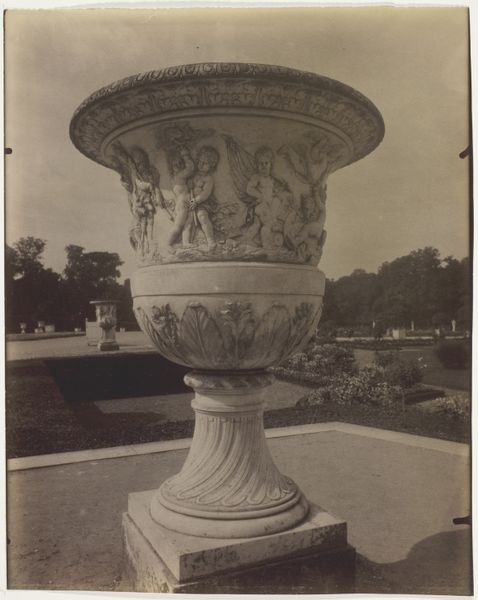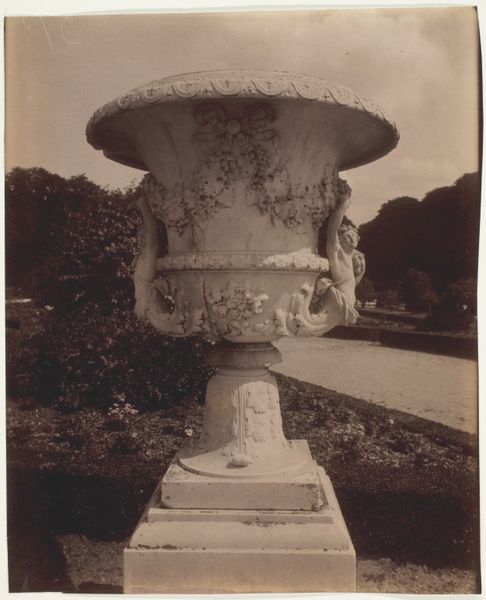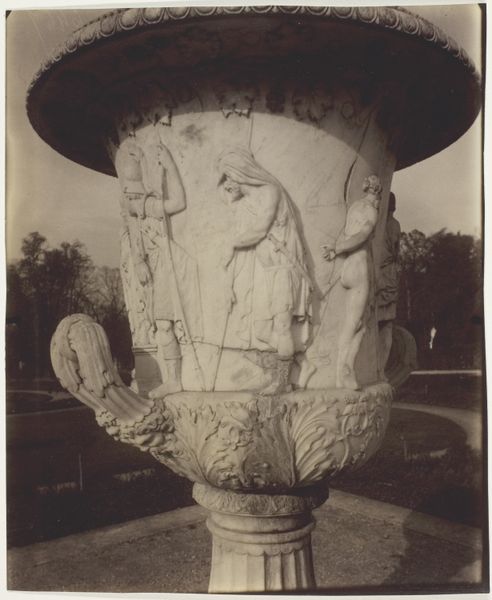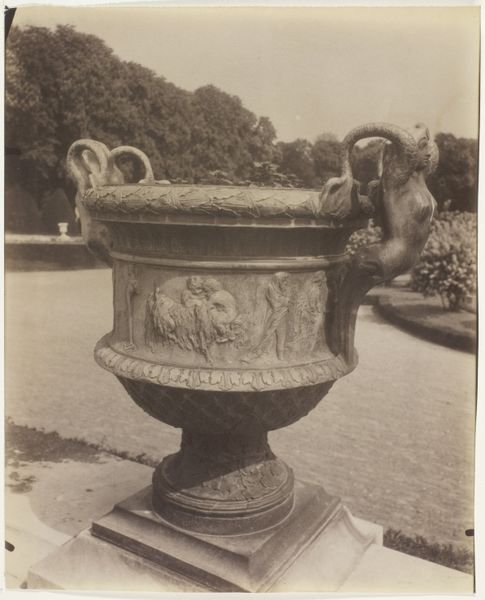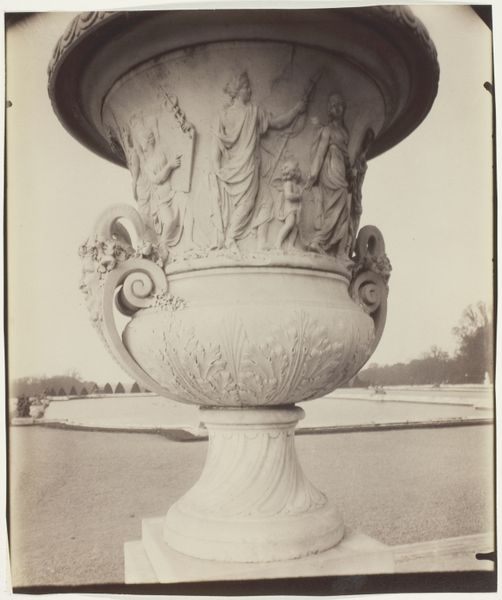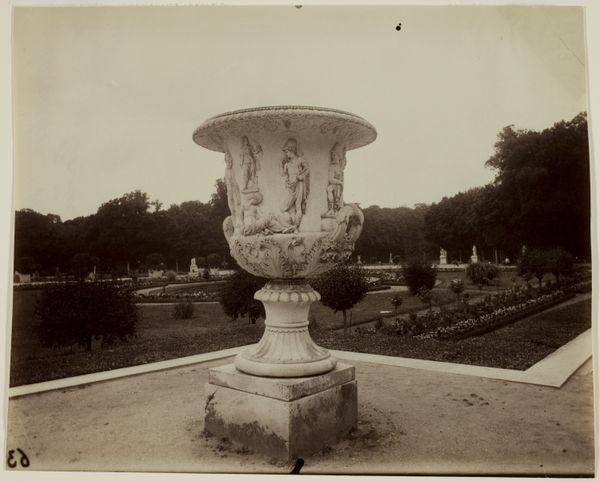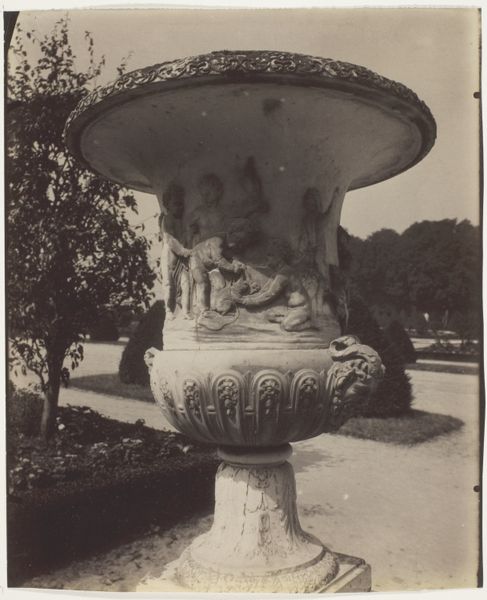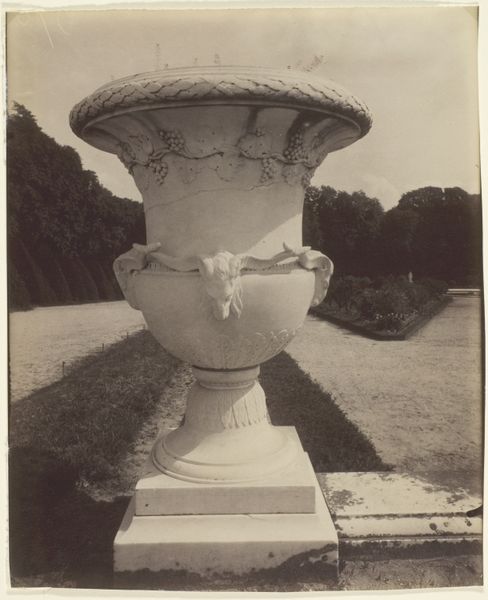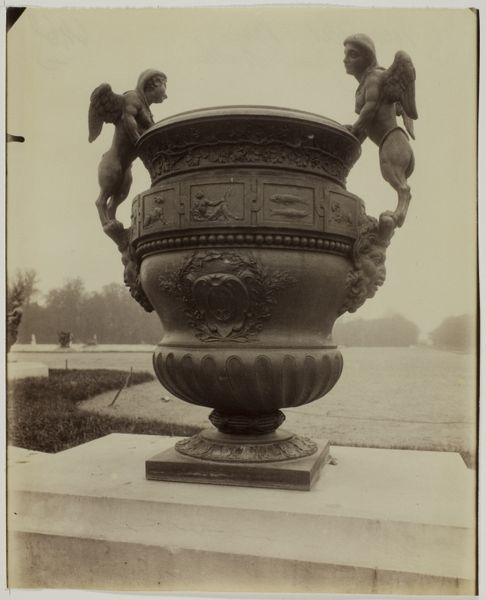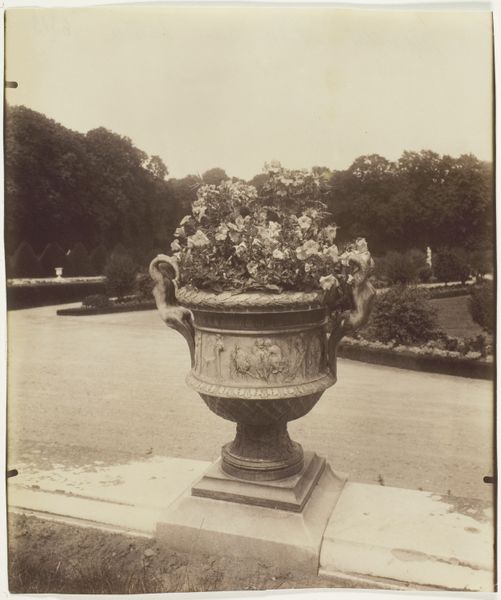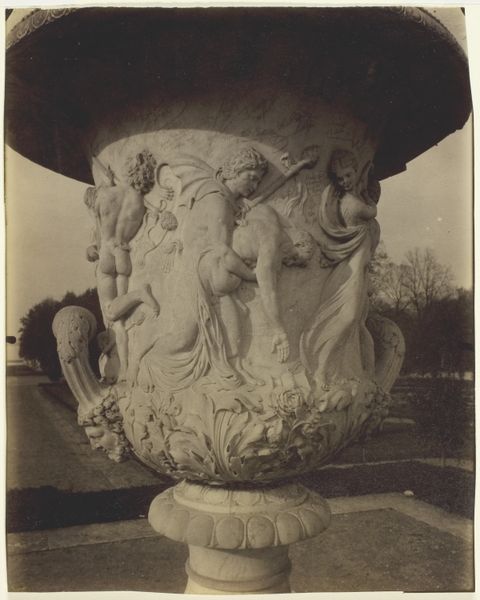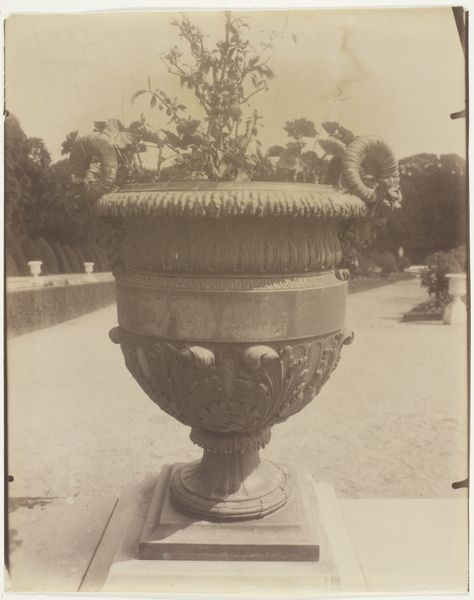
silver, print, photography, sculpture, marble
#
portrait
#
silver
# print
#
wedding photography
#
landscape
#
archive photography
#
photography
#
historical photography
#
sculpture
#
france
#
men
#
cityscape
#
marble
#
realism
Dimensions: 22.1 × 17.7 cm (image); 22.1 × 17.9 cm (paper)
Copyright: Public Domain
Editor: This silver print, "Versailles, Vase," taken by Eugène Atget in 1905, showcases a large, ornate vase seemingly in situ within the Palace gardens. I'm struck by the contrast between the sculptural detail and the rather plain backdrop. What grabs your attention in this image? Curator: Immediately, I think about the labor involved. The marble quarrying, the artisans skilled in carving those figures – nymphs and satyrs I presume, with such detail and symbolism - and the broader system of patronage that made such elaborate objects possible in Versailles. What was Atget trying to capture? Was it about celebrating artisanal production, or simply documenting the decadent leftovers of a bygone era? Editor: It’s interesting that you highlight the labor behind both the vase and Atget’s image. I suppose I hadn't really considered the social implications. Is the act of photographing the vase itself a kind of labor, a contribution to its material and cultural life? Curator: Precisely! Think about the chemistry of silver printing at that time – the cost, the materials, the meticulous process involved in creating a photographic print like this. Atget wasn't simply pointing a camera; he was participating in a material transformation, replicating and disseminating the vase, in some ways democratizing the gaze upon it, no longer exclusively accessible to the wealthy landowners, the Royal family. It creates a parallel production. Editor: That makes me rethink the flatness of the photographic medium – you make it seem more like a hands-on sculptural process in its own right. Curator: Absolutely. Consider Atget’s role. He wasn’t just an observer, he was deeply embedded in the economic and cultural fabric of his time. His work reminds us that even seemingly straightforward images are the products of complex material and social relationships. Editor: It’s like the photo isn't just *of* a vase; it’s about the system of making things, and how that making is tied to the world around it. That’s a perspective I hadn’t considered. Thanks! Curator: Exactly! And it's a good reminder to question how objects—artistic or otherwise—come into being and whose stories they truly tell.
Comments
No comments
Be the first to comment and join the conversation on the ultimate creative platform.
